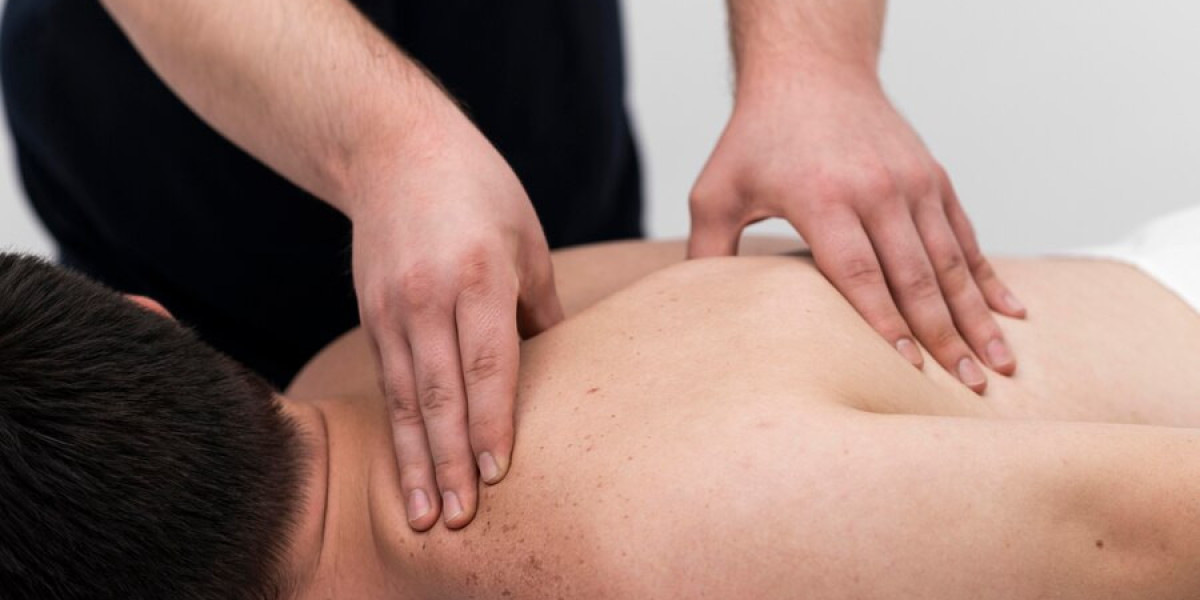It specifically targets areas of the body known as "trigger points"—tight knots in the muscles that can cause pain in other parts of the body. Whether you're dealing with chronic pain, muscle tightness, or discomfort after a workout, trigger point massage can offer a solution. This guide will explain what trigger point massage is, how it works, the benefits it offers, and what you can expect during a session.
What is Trigger Point Massage?
Trigger point massage is a therapeutic technique that focuses on releasing tight knots in muscles, also known as trigger points. These knots are areas of muscle tissue that become tight and tender, often causing pain or discomfort in other parts of the body. When pressure is applied to a trigger point, the pain can radiate to other areas, which is why it’s often referred to as referred pain.
Trigger points can develop due to a variety of factors, including poor posture, stress, overuse of muscles, or injury. Over time, these knots can cause chronic pain, limit mobility, and impact overall muscle function. Trigger point massage targets these specific areas to release the tension and relieve pain.
Unlike traditional massage, which typically focuses on relaxation, trigger point massage uses focused pressure and deep tissue techniques to address the underlying muscle tightness. It is often combined with other types of massage techniques, such as myofascial release or deep tissue massage, to achieve the best results.
How Does Trigger Point Massage Work?
Trigger point massage works by applying sustained pressure to the affected area. The pressure is used to release the muscle knot, which is believed to reduce the pain and tension associated with the trigger point. The therapist typically uses their fingers, thumbs, or elbows to apply deep pressure to the trigger points.
When pressure is applied to a trigger point, the muscle fibers are compressed, and the blood flow is restricted. This triggers a "release" of the knot as the blood returns to the area, promoting healing and restoring muscle function. The process helps to break down adhesions, improve circulation, and reduce muscle tension. Although the pressure can feel intense, it should never be unbearable, and most people find that the relief they experience afterward is well worth it.
Benefits of Trigger Point Massage
Trigger point massage offers numerous benefits for both physical and mental well-being. Here are some of the key advantages:
Pain Relief: Trigger point massage is most commonly used to relieve muscle pain, particularly in areas that are prone to tension, like the neck, shoulders, and lower back. By targeting the knots directly, it can provide immediate relief from discomfort and help reduce chronic pain.
Improved Range of Motion: Tight muscles and trigger points can restrict movement and flexibility. Trigger point massage helps release muscle tension and restore normal movement patterns, improving overall range of motion and flexibility.
Stress Reduction: Trigger points are often associated with stress and anxiety. By relieving muscle tension, trigger point massage can help reduce the mental strain associated with physical discomfort. Many people find that regular trigger point massage helps them feel more relaxed and less stressed.
Better Circulation: Applying pressure to trigger points helps increase blood flow to the affected area. This improved circulation can speed up the healing process, promote muscle recovery, and reduce muscle soreness.
Prevention of Injury: When trigger points are left untreated, they can cause long-term muscle imbalances and increase the risk of injury. Trigger point massage can help prevent these issues by releasing tension and promoting proper muscle function.
Chronic Pain Management: If you suffer from chronic pain conditions, such as fibromyalgia or tension headaches, trigger point massage can be an effective way to manage pain. Regular treatment can help reduce the frequency and intensity of flare-ups, providing long-term relief.
Improved Posture: Muscle imbalances and tightness can lead to poor posture, which in turn causes more pain and discomfort. By releasing trigger points, trigger point massage can help improve posture and relieve the associated aches and pains.
Common Areas Treated with Trigger Point Massage
Trigger points can develop anywhere in the body, but they are most commonly found in areas where muscles are frequently used or prone to tension. Here are some of the most common areas treated with trigger point massage:
Neck and Shoulders: The neck and shoulder area is one of the most common places for trigger points, especially for people who spend long hours at a desk or in front of a computer. These muscles often become tight and stiff, leading to tension headaches and discomfort.
Back: The upper and lower back are also common areas where trigger points form. Lower back pain is particularly prevalent, and trigger points can be responsible for deep, aching pain that radiates into the hips or legs.
Legs: Trigger points can develop in the quadriceps, hamstrings, calves, and glutes, leading to tightness and pain in the legs. This is especially common in athletes or those who engage in regular physical activity.
Arms: The forearms, biceps, and triceps can develop trigger points, especially in individuals who perform repetitive tasks such as typing, lifting, or weight training.
Head: Tension headaches and migraines are often caused by trigger points in the neck, shoulders, and scalp. Treating the underlying muscle tension can help alleviate the pain associated with these conditions.
What to Expect During a Trigger Point Massage Session
If you’ve never had a trigger point massage before, you may be wondering what the experience will be like. Here’s a general overview of what you can expect:
Consultation: Before your session, the therapist will likely ask about your medical history, lifestyle, and any areas of pain or discomfort. This helps them tailor the massage to your specific needs. Be sure to mention any particular spots that feel tight or painful.
Positioning: During the massage, you will typically lie on a comfortable massage table, although you may need to change positions depending on the areas being treated. You’ll be draped with a towel for modesty, with only the area being worked on exposed.
The Massage: The therapist will use their fingers, thumbs, or elbows to apply sustained pressure to specific trigger points. This pressure may be intense, but it should not be painful. The therapist may ask you to provide feedback on the pressure to ensure that it is comfortable. You may feel a sensation of release or "melting" as the knot is worked out.
Aftercare: After the session, you may experience some soreness, similar to the feeling you get after a good workout. This is normal and should subside after a day or two. Drinking plenty of water and stretching can help alleviate any discomfort. The therapist may also provide you with recommendations for self-care, such as exercises or stretches, to maintain the benefits of the session.
How Often Should You Get Trigger Point Massage?
The frequency of trigger point massage depends on your individual needs and the severity of the muscle tension you're experiencing. For chronic pain or tightness, weekly sessions may be necessary until the tension is relieved. After that, monthly sessions may be sufficient to maintain muscle health and prevent the return of trigger points.
For those with occasional muscle soreness or minor discomfort, a session every few weeks may be enough to keep trigger points at bay. Your therapist can help determine the best treatment schedule based on your condition.
Is Trigger Point Massage Right for You?
Trigger point massage is an effective solution for anyone dealing with muscle tension, pain, or discomfort. It is particularly beneficial for:
People with Chronic Pain: If you suffer from conditions like fibromyalgia, arthritis, or chronic back pain, trigger point massage can help manage symptoms and reduce discomfort.
Athletes and Active Individuals: Whether you're a professional athlete or a weekend warrior, trigger point massage can help with muscle recovery, prevent injuries, and enhance performance.
People with Desk Jobs: If you spend long hours sitting at a desk or using a computer, you may develop trigger points in your neck, shoulders, and back. Trigger point massage can help alleviate this tension and improve posture.
Anyone Dealing with Stress: Stress can contribute to muscle tightness and trigger points, especially in the neck and shoulders. Trigger point massage can help relieve the tension caused by stress and promote relaxation.
Conclusion
Trigger point massage is an effective way to relieve muscle pain, improve flexibility, and enhance overall well-being. By targeting specific muscle knots and applying sustained pressure, this technique can help release tension, improve circulation, and reduce chronic pain. Whether you’re an athlete, dealing with stress, or simply experiencing muscle tightness, trigger point massage can help you feel better and perform at your best.
If you're considering trigger point massage, be sure to consult with a qualified therapist who can tailor the session to your specific needs and ensure a comfortable experience. Regular sessions can help you maintain muscle health, prevent injury, and live a pain-free life.








